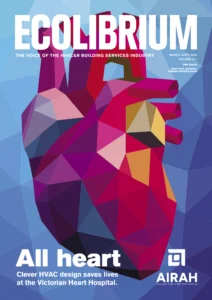Open for business

Building automation control products that can only be serviced by one contractor can present significant risk. Open protocols make much more sense, writes Jason Duncan.
I am very fortunate to meet and work with contractors, building owners and managers from all around the world.
“I want an open system” would be one of the most common requests I hear.
Having worked in HVAC and BMS controls for 25 years, you would think I would have a reasonable grasp on the definition. But for the longest time I struggled with the statement “open system” and what it actually meant.
This led me to start asking building stakeholders why they wanted an open BMS. And this is when I really started to get a grasp of what the problem was and what the solutions might be.
The most common answer would be, “I don’t want to get stuck with one service provider”. Or in other words, “I want to be able to have a choice of service provider”.
The importance of choice
To understand why choice is so important to building stakeholders, we need to understand some of the building control industry’s history.
Up until 1995 most building controls products communicated on proprietary protocols. In layman’s terms,p protocols are the language the controllers used to communicate within and between each other. Proprietary protocols are made by the manufacturer and are not available to the public. This restricted the ability for anyone, except the manufacturer or their designated contractor, to communicate with and therefore service, work on, and or integrate with that product.
This is where the problem started: building owners would have a product installed in their facility, and once the equipment was installed there was only one provider that could service that facility.
I know this industry is full of people with great capabilities and good intentions. However, if you are a building stakeholder and you have a building automation control product in your building that can only be provided and serviced by one contractor, then you are operating under a significant risk that complacency might set in. The facility and operators would be totally reliant on the contractor’s goodwill to ensure the service level does not drop and their prices do not rise. Without healthy competition, how does the contractor stay motivated to deliver quality service?
Open protocol and compliance
ASHRAE recognised this issue, and in 1995 ANSI/ASHRAE Standard 135 was published, and the Building Automation and Control Network (BACnet) was officially launched. The standard was independent and open to the public, hence the term “open protocol”.
BACnet has become the most widely used building automation protocol globally. To ensure manufacturers comply with the BACnet standard, BACnet testing laboratories were established. To secure the official BACnet compliance certification, manufacturers send their software and hardware to the laboratories, where they are rigorously tested to ensure they meet the standard.
So now we have an independent, publicly published, open standard. Problem solved, right? Well, it is a huge leap and very important for the building stakeholders to request BACnet open protocol for their buildings. We now have an open protocol product that should theoretically be able to integrate with other brands that are also BACnet certified.
But the reality is, the system in the building still needs to be maintained, and what’s the value of putting multiple products in the building? So, if the product is still only provided by one contractor in the country, the building is still operating under a significant risk.
What the building needs is an open protocol coupled with a managed open-product distribution model.
Open-product distribution model
What does open-product distribution model mean? To reduce the risk of buildings being dependent only on one contractor, building stakeholders should be specifying that the product being installed must offer multiple qualified contractors with the means, capability, and accessibility to supply and service the product in the country, or more specifically in the region, assuming the region is large enough to support such a business.
Something to be aware of – and I am not saying it is happening here – is that I do not believe building automation products should be available off the shelf for anyone that’s interested in technology to get a hold of and test-run their technical capabilities in a complex built environment. This would almost be worse than not having a choice of provider.
What I am saying is there should be multiple providers of the product who are trained, and prequalified to ensure building stakeholders know they have a choice of provider, and those providers have the technical skills and business practices to offer quality and sustainable outcomes for their assets.
Expanding the vision
In a rapidly evolving world, where adaptability and choice are paramount, the significance of embracing open protocols and a managed open-product distribution model cannot be overstated. The journey from proprietary systems to the liberation of communication through standards like BACnet has reshaped the landscape of building automation. Yet, the vision extends beyond standards—it encompasses a commitment to fostering a competitive market of prequalified providers.
By demanding both open protocols and a well-managed product distribution model, building stakeholders secure not only the freedom to choose their service providers but also the assurance of sustainable and efficient buildings. The true power lies in the ability to make informed choices that not only benefit the bottom line but also contribute to a greener, more sustainable future.
Jason Duncan is Regional Sales Manager – Australasia for Reliable Controls.

This article appears in Ecolibrium’s March-April 2024 edition
View the archive of previous editions
Latest edition
See everything from the latest edition of Ecolibrium, AIRAH’s official journal.




